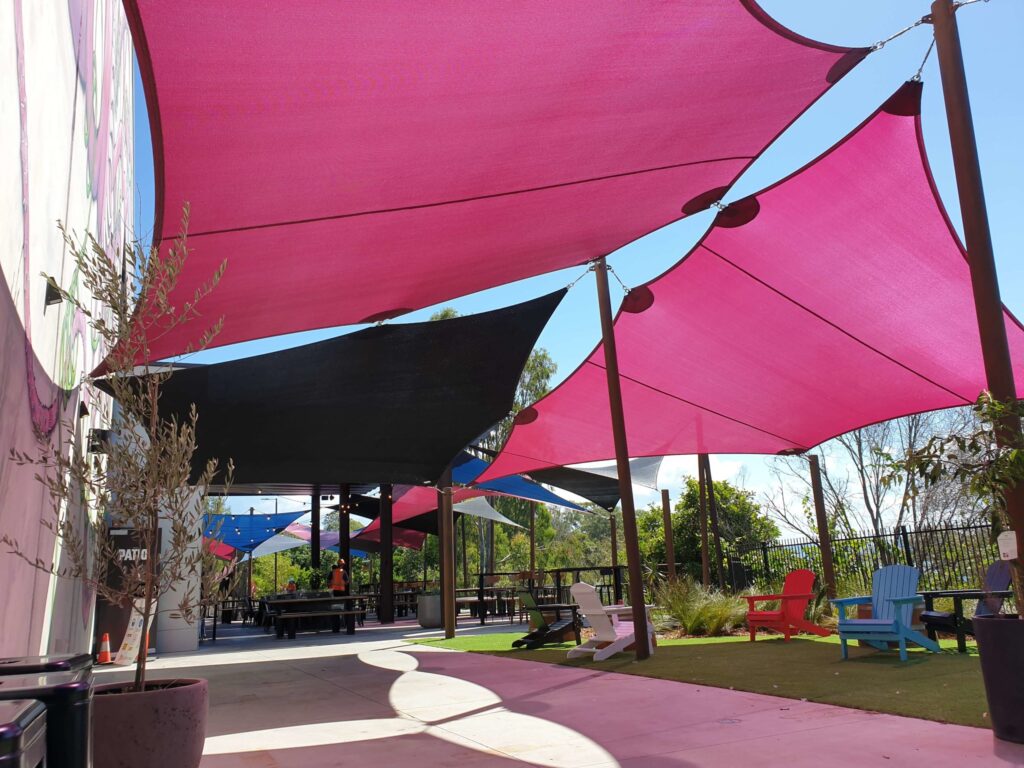Like so many things, the quality of a shade structure lies in the details. Here are our top five quality indicators:
CRAFTMANSHIP
A domestic or commercial shade sail consists of 3 key elements: the shade cloth, the edging and the corners. A quality shade cloth can be identified by the fibres of the shade fabric, which are either knitted or woven and provide at least 94% UV protection and have a life span of up to 15 years. You can identify the quality by the double locking stitching. Another quality indicator is the use of a robust thread for the double lock stitching, that does not deteriorate from exposure to elements and UV radiation. For a quality shade structure not only will the shade fabric and stitching materials be of high quality but also the craftmanship of the stitching.
DESIGN AND EXPERTISE
An expert shade structure supplier offers a complete end to end design, construct, management, and installation service that covers all areas of the project, from functionality consideration, initial design concepts, site specific requirements and shading efficiencies, wind regions, engineering, building approvals, structurally sound installations, as well as the commissioning of electrical aspects. A well designed shade structure sail will not, sag, droop, flap about or wear out quickly and it will provide shade or rain protection to the right area. This may seem logical but there have been numerous shade structures the Versatile Structures have been called in to re-work owing to the shade structure not providing shade protection to the right area – this specifically happens when an installer doesn’t consider the sun position for the time of year when the structure is being designed. Naturally, all shade structural designs must meet AS/NZS1170.0, AS/NZ1170.1, AS/NZ1170.2, AS4100, AS3600 and AS1170.4 standards.
DURABILITY
Australian weather conditions are very tough on fabric. Material quality differs hugely across suppliers and not all fabric can handle the searing heat and high wind loads. The initial investment in quality fabric and workmanship means higher durability and huge cost savings in the long run. Quality PVC sails combined with some sensible maintenance will ensure the shade structure lasts for over 15 years.
FINISHES
Smart features like powder coated poles in the colour of your choice, strong corner detailing on the shade fabric for added strength, sails designed with 3D software and cut with accurate computerised equipment create a distinctive streamlined appearance. Another great feature is hidden stainless-steel cables around the edge of the sail for tensioning and ongoing adjustment, this feature is further enhanced with the use of marine grade stainless steel chain and fittings which will never rust, wear out, corrode or work lose. Finishes like these all add to the design quality and workmanship expertise that deliver shade structures that will look good and deliver year in and year out.
INSTALL
The key to erecting a solid shade structure is strong deep foundations, with lots of steel reinforcement in the concrete. Another key indicator for a quality shade structure is the use of engineered poles that have been specifically engineered for your custom structure. Engineered poles will be there for the long run and a sail that has been carefully designed and installed, it will not vibrate excessively under wind load. This gives you two benefits. It will not work lose and it will not fatigue prematurely.
Have a read through our article on shade structure questions if you still have unanswered questions.

